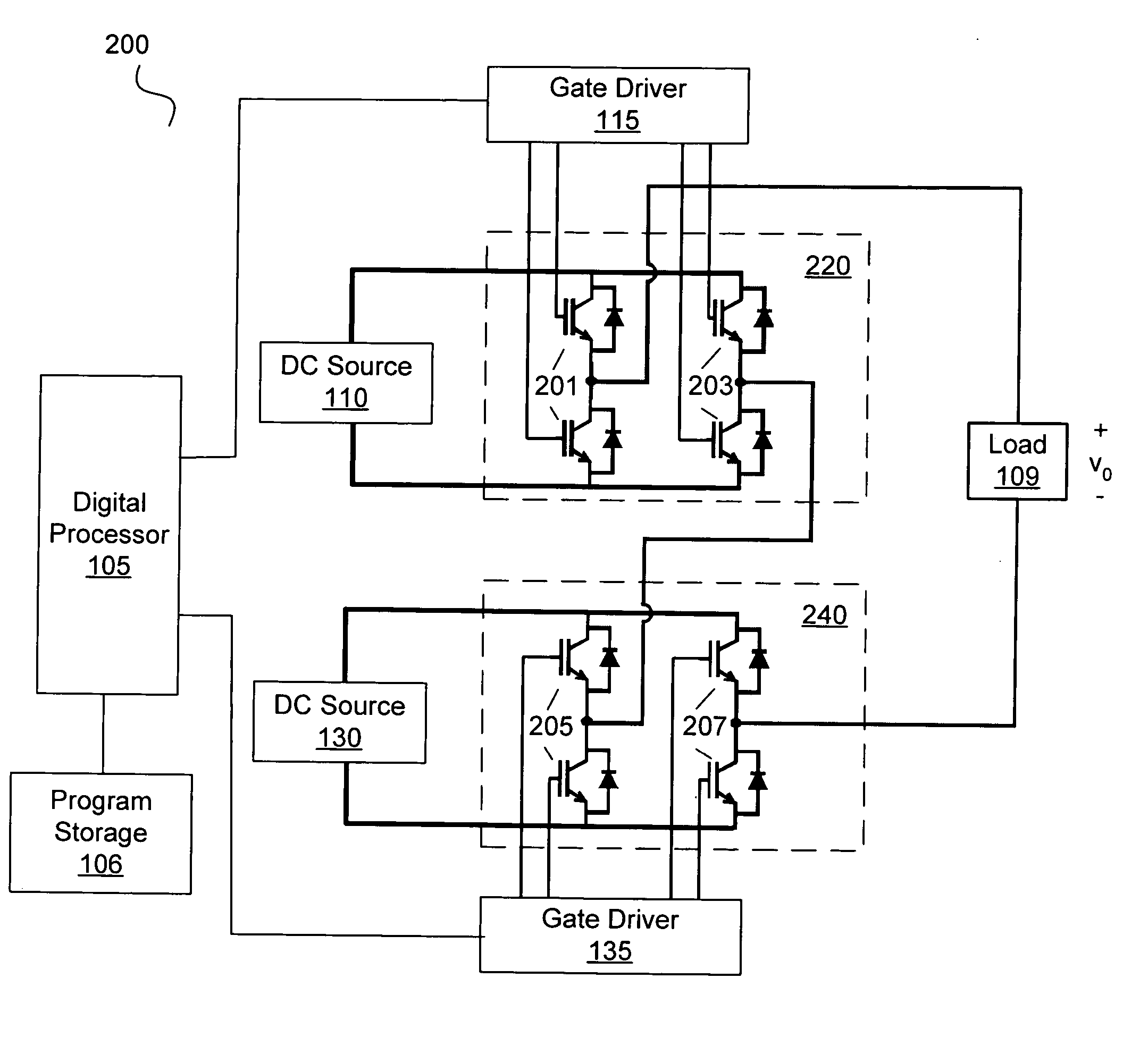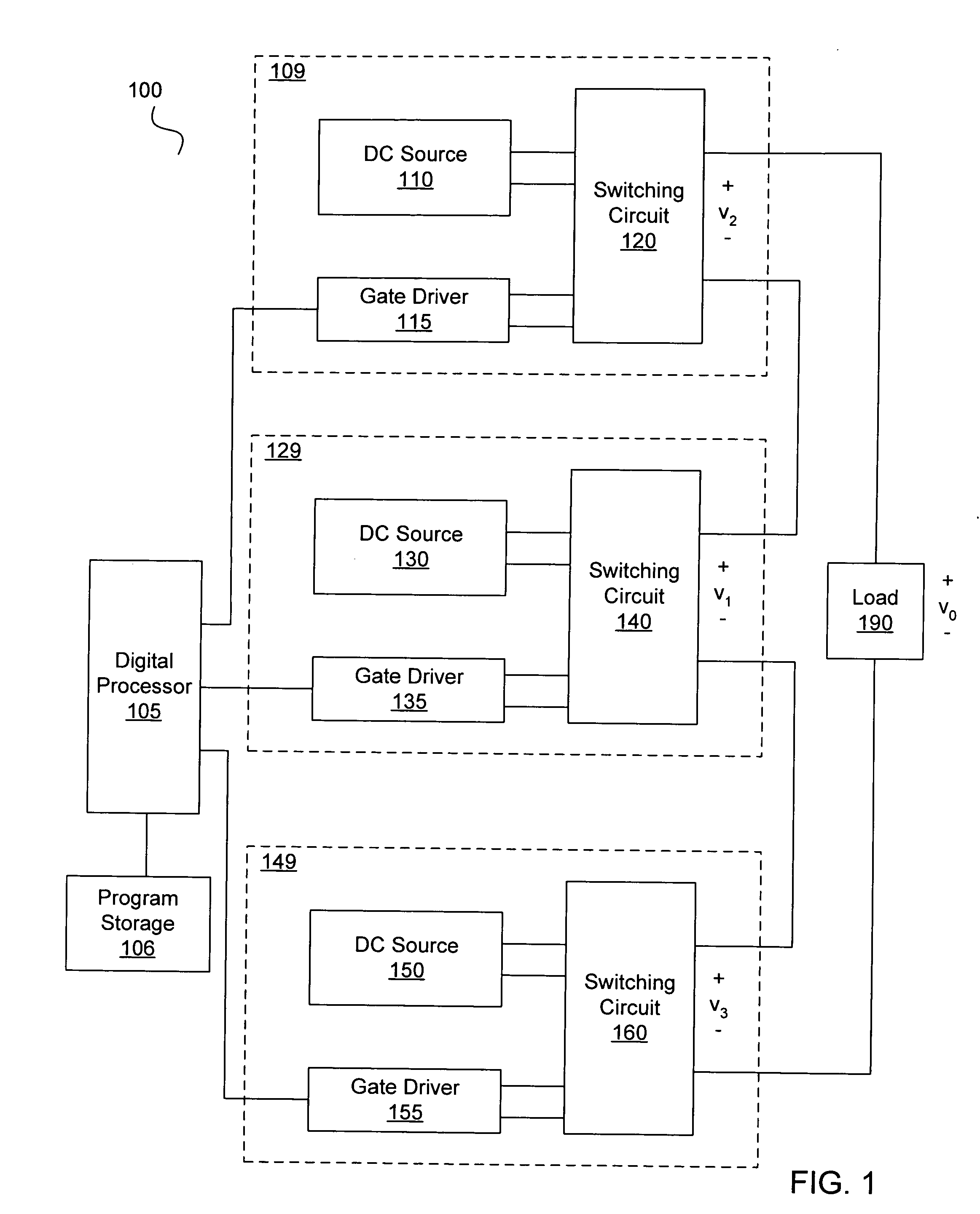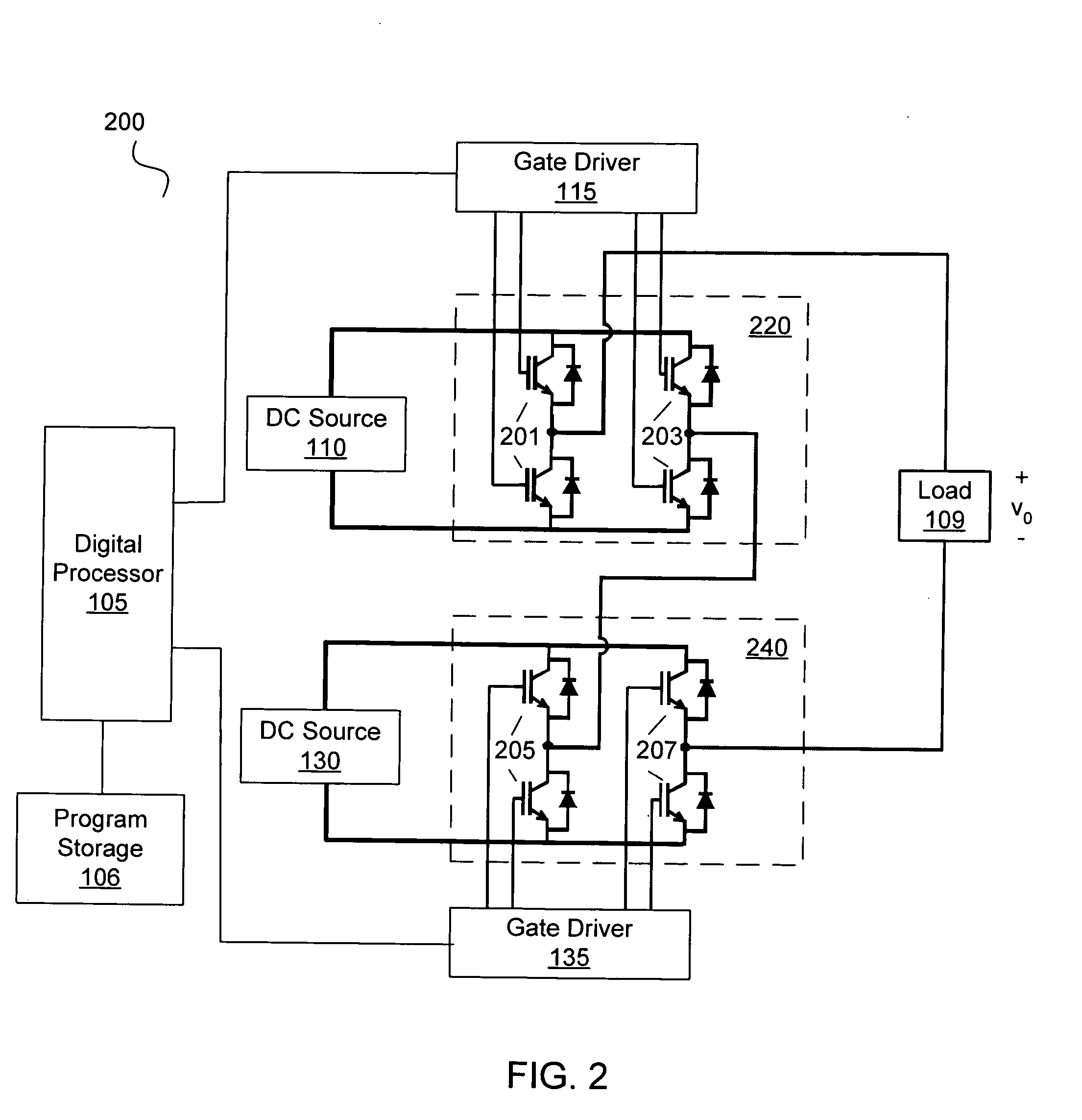Methods and systems for simultaneous multiple frequency voltage generation
a technology of multiple frequency voltage and generation method, applied in the field of power supplies, can solve the problems of inability to independently adjust the level of the current supply, the current supply of the dual-frequency power supply is significantly affected by the high frequency section, and the current supply of the dual-frequency power supply is affected
- Summary
- Abstract
- Description
- Claims
- Application Information
AI Technical Summary
Problems solved by technology
Method used
Image
Examples
example 1
Simulated Waveform
As a specific example of dual-frequency harmonic generation, consider the case where a span of 5 is required between the fundamental frequency component and the desired harmonic, e.g., 10 kHz and 50 kHz, respectively. FIG. 17 shows a set of graphs of simulated waveform generation. A five level step voltage waveform (normalized) 1710 was determined with step angles being designed to also eliminate the 3rd and 7th harmonics. As can be seen from the normalized harmonic spectrum 1720, the 9th and 11th harmonics are small as well, which means that the desired dual-frequency voltage waveform 1730 may be closely approximated with a small amount of filtering where necessary. In an induction heating application, for example, the induction coil's impedance naturally attenuates the various frequency components in proportion to their frequencies in converting the voltage to current, which dual-frequency approximation is of greater importance than the voltage. In other applic...
example 2
Experimental Waveform Using Equal DC Source Values
Laboratory measurements were obtained from a 5-level inverter demonstrating a 4-step PNPP case to generate 1st and 5th harmonics with V5 / V1=0.6 while canceling the 3rd and 7th harmonics. Such a waveform may be desired, for example, in an induction heating application where a span of 5 is needed between the two heating frequencies. FIG. 18 shows a set of graphs of experimental waveform generation results. Graph 1810 shows the voltage waveform and graph 1820 shows the current waveform (for an inductive impedance load) for a fundamental frequency of 10 kHz and a (phase-shifted) harmonic of 50 kHz.
In this example, each DC voltage level (for a 2-cell cascaded H-bridge converter) was 125 V, the (R-L) load average power was approximately 513 W and the conversion efficiency was approximately 91.3% (with each switch operating at 20 kHz). The step angles were set at θ1=4.61°, θ2=42.89°, θ332 58.44°, and θ4=77.73°. Table 1 shows a compariso...
example 3
Experimental Waveform Using Unequal DC Source Values
As noted above, the DC source values may not be identical. As such, a quarter-wave symmetric waveform with s steps of magnitudes Ei, i=1, . . . , s, has a Fourier series expansion that is given by Equation 1 but with Vh=4h π[E1cos(h θ1)±E2cos(h θ2)±…±Escos(h θs)]Equation 13
where θi, i=1, . . . , s, are the angles (within the first quarter of each waveform cycle) at which the s steps occur and the signs are either + or − depending on whether a positive step or a negative step occurs at a particular θi.
For a specific problem of synthesizing a stepped waveform that has desired levels of V1 and V3 with two of the adjacent higher harmonics equal to zero, the step angles 0≦θ1≦θ2≦ . . . ≦θs≦π / 2 may be chosen so that 4π[E1cos(θ1)±E2cos(θ2)±…±Escos(θs)]=V1Equation 14a43π[E1cos(3θ1)±E2cos(3θ2)±…±Escos(3θs)]=V3Equation 14b[E1cos(5θ1)±E2cos(5θ2)±…±Escos(5θs)]=0Equation 14c[E1cos(7θ...
PUM
 Login to View More
Login to View More Abstract
Description
Claims
Application Information
 Login to View More
Login to View More - R&D
- Intellectual Property
- Life Sciences
- Materials
- Tech Scout
- Unparalleled Data Quality
- Higher Quality Content
- 60% Fewer Hallucinations
Browse by: Latest US Patents, China's latest patents, Technical Efficacy Thesaurus, Application Domain, Technology Topic, Popular Technical Reports.
© 2025 PatSnap. All rights reserved.Legal|Privacy policy|Modern Slavery Act Transparency Statement|Sitemap|About US| Contact US: help@patsnap.com



